Induction cooktops: how fine is the control? (lots of levels?)
J S
5 years ago
last modified: 5 years ago
Featured Answer
Sort by:Oldest
Comments (26)
J S
5 years agoRelated Discussions
How do you cook lots of pancakes on an induction cooktop?
Comments (13)My cooktop buzzes a little no matter which size pan I put on which size hob. Not everyone has this experience - it depends on the brand of cooktop and the type of pans, how full they are and how hot they are. I haven't noticed that it matters if the pan is too big for the hob, and I wouldn't describe it as horrible buzzing. I know that not many places have demo induction, but do try to find one, bring your pans and some water to fill them, and listen. The buzzing doesn't bother me as much as the clicking, and the clicking, as far as I can tell, seems to be unique to Kitchenaid. By all means, avoid Kitchenaid induction. I cooked on an old Tappan gas range in a rented cottage this summer, and that gas made noise, too. It hissed. And the gas wasn't nearly as adjustable as my induction cooktop. An old Tappan is no comparison to Wolf, and a built in griddle, or a grill, like a Jennair, are wonderful features. But induction is pretty wonderful, too, for other reasons. The biggest one is probably ease of cleaning, and there are threads that list the many benefits, which I'm sure you've seen. Some people still find that a gas cooktop or range better fits their requirements, but don't be put off by the stories of induction's noise (except KA's clicks) or the lack of a built in griddle. Induction rocks....See MoreInduction Cooktop: Installed 30" Frigidaire PROFESSIONAL FPIC3095MS
Comments (9)To Nanj: I literally took my "favorite-sized" pots to the store and put them on the cooktop to make sure I could easily fit, say ... three of them at one time and it was not a problem. There's a good amount of space bet. each burner and I DO use bigger pots, but seldom more than 2 at a time I'd say. Three would not be a prob. at all for me + a fourth little one, if nec. I COULDN'T have the 36" size unless I was willing to modify my existing granite counter. But, even if I could, the 30" was more than adequate for my needs and I've always used a 30" so I knew it should be fine. I've never had the need to use 5 burners at one time, but if I did: I have three add'l single burners in my pantry: a butane gas one that is fabulous, an old elec. coil one and an induction burner that I bought as a trial. 59Dodge: I so agree - the only time I would use the boost is to boil a large pot of water and can't imagine having to do that in three diff. pots. As stated, you CAN use the boost for two diff. pots at the same time. NO ONE would ever be just "cooking" on the boost level - it's on steroids! 3400 Watts is waaaaay more than anyone could possibly need or want. And it's so fast - it's ridiculous. To me, 3700 Watts is totally superfluous and redundant. 12 crumbles: read my response just above to Dodge RE: 3700 watts - I'm promising you, it's just not necessary. I would think the time difference might be LESS than 15-20 seconds. Re: the timers for the burners - I'm very attentive when I'm cooking and could easily visualize that I wouldn't use them. I don't want the burners going off without my realizing it and it would always be a guessing game as to the proper time to set it for. If I'm frying, I'm right there watching and turning, if I'm simmering a big pot of sauce, chili, whatever - on the induction it's not going to ever burn. Only for baking in an oven does one need a timer, IMO. And, FYI - this cooktop DOES have a minute timer that is easily set, just to let you know when "X" amount of minutes have expired. Also lets you know, after a pot has been removed, that that burner is still hot/warm to the touch as a reminder, until it cools down....See More36" Induction cooktop questions - Wolf vs. Bosch w/FlexInduction
Comments (40)@aspen75, I have that same griddle that I use on mine. I understand and experience what you are saying and it is a bit of a disappointment. However, it has never hindered my cooking abilities on it. I mainly use my griddle for fish, shrimp, or pancakes (DH sometimes uses it for squash and zucchini) and because the heat ends up dispersing throughout the griddle, I never have issues with the food I cook. Sometimes I might have to move my fish or shrimp around as it cooks, but it still cooks. I'm still very pleased with my Wolf and so glad I went with it over gas, which we had before and which definitely had far worse hotspots. I have not tried a cast iron griddle on mine because I like the ease of cleaning the one I do have. Plus, I have a Blackstone on my patio just off my kitchen and I use it a ton in the spring, summer, and fall when I truly need a griddle ;)...See MoreWould you do an INDUCTION stove top?
Comments (67)A fascinating thread! I believe the induction cooktops are made of Ceran (not Corian). Regarding scratching: I use heavy stainless steel cookware (Demeyere), and have slid the pot across the top, especially if it is too heavy to lift off the burner. I am not overly neat, but have never noticed scratching on the cooktop in the almost two years I have had it. For cleaning, I use a sponge, or on occasion, a Dobie pad. Never had reason to use a razor. Even if I didn't clean drippings when it was still wet, usually a damp sponge is sufficient to remove any spills on the cooktop. I am more disappointed that the stainless steel frame around the cooktop has shown scratch marks; not deep ones, but you can see the lines. I've learned to live with it because I don't think there is anything you can do about them. Regarding the questions as to the number of positions on the dial and whether they are continuous or discrete, please see: Induction cooktops: how fine is the control? (lots of levels?) and GE or Bosch slide-in induction range? (That last post is from 11/26/18, not sure why Houzz lists it as "last year" - I note this because GE has updated its Cafe models, not sure if Bosch has.) The point is do your research, make a list or table of the features of each that you are interested in. On some the placement of the large hob is important (back or front), and can make a difference in your choice, so think about how you cook now and whether placement of the burner would make a difference to you. For instance, having the large hob in the back bothered some people because of having to carry a heavy pot full of water even the few inches to the back burner (and back over the front burner to the sink) was more than an annoyance. Read reviews (you will learn which are helpful and which are simply griping), of cookware as well as the range. Buy the best you can afford, even if it means beginning with three pieces of cookware and slowly adding on. Also think carefully about whether you want or need that second oven when the main oven is so far down you must bend low to lift a potentially heavy pan, whether it be chicken or turkey or anything else. Even with the extended sliding (telescoping) shelves, you still must lift that pan out of the oven to the stovetop or counter. Also, the hob (at least on my GE Cafe) does NOT turn off immediately if the pot is lifted, you have a few seconds, so if you put it back on the burner almost immediately, you don't have to turn the burner on again. But, if you do have to turn it on again, it is not a big deal. Also, some misunderstanding above about the responsiveness; an induction range does NOT have to "heat up" -- if you put the dial on 5, it pulls electricity to get to 5 immediately. A gas stove always begins at the lowest or highest flame and has to be adjusted to the setting you want. Similarly, if you want to turn the setting down or up, it will respond immediately, not phases, like a flame. Therefore, if you turn off a boiling pot of water on an induction stove, it will stop boiling immediately; if you need to begin on high (such as boiling water for rice) and then lower the heat (such as after you put the rice in the pot), it will respond immediately, a sensitivity cooks appreciate. Don't drag a pan across the surface as you would in pulling it quickly to mix or rotate food. Don't expect to lift the pan to flip the contents and then put it back on the stovetop; I would think the hob might turn off in that amount of time of no contact. However, it is a safety feature, not one to be upset about in general. As to keeping the top clean, there have been discussions on cooking on paper towels or silicon or silpat (such as: WARNING: Silpat, induction and wok do not mix! and Avoid scratching induction cooktop and kas - use of silpat on induction cooktop?and General Search: "Houzz and silpat on induction"). I have used a thin silat under and beyond the pan when making spaghetti sauce as I find it 'burbs' over the top as it simmers and reduces. Regarding things being manufactured with a set number of uses in mind from the beginning, I think you are referring to planned obsolescence (where things are created to work for only so long before they break, compelling you to buy a new one sooner than your old appliances would have broken down). Some accept this as the reason things don't last as long as your old appliances. Some say the electronics don't last as long as the old mechanical way of manufacturing, such as 'less moving parts.' It's a difficult call, since we can know the experience people have had because of the reviews or talking with repair people or friends, however, the manufacturers are not transparent as to their goals. Your own research is important, learning if any companies have a higher incidence of repairs when compared to others. Consumer Reports publishes reliability findings as does Yale Appliances (here is one from May 2020 bottom of article has a comparison of reliability of induction ranges vs cooktops vs electric ranges). Do consider paying for extended warranties as electronics are very expensive to repair. Do not assume that the higher end models never need repairs because they were more expensive to begin with; in fact they can be even more expensive to repair. Also consider leaving the oven door open for 10-15 minutes after cooking until the fan stops, so the heat escapes and does not gather into the electronics portion below the cooktop area. Hope some of this helps. Much has been touched on by the answers above. Please do let us know your decision!...See MoreJ S
5 years agoJ S
5 years agoBigDaddy
4 years agokaseki
4 years agolast modified: 4 years agoweedmeister
4 years agoJ S
4 years agoJ S
4 years agoJin Zhang
2 years agojulieste
2 years agoopaone
2 years agoJ S
2 years agojwvideo
2 years agolast modified: 2 years agojwvideo
2 years ago
Related Stories

KITCHEN APPLIANCESFind the Right Cooktop for Your Kitchen
For a kitchen setup with sizzle, deciding between gas and electric is only the first hurdle. This guide can help
Full Story
HEALTHY HOMEWhat to Know About Controlling Dust During Remodeling
You can't eliminate dust during construction, but there are ways to contain and remove as much of it as possible
Full Story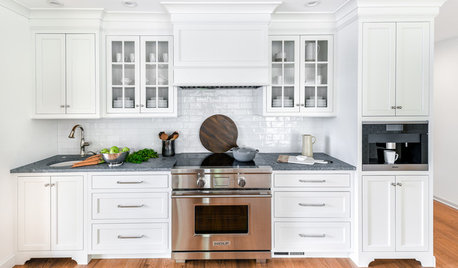
KITCHEN OF THE WEEKKitchen of the Week: New Layout, Lots of White Freshen Things Up
An empty-nest couple and their designer create an elegant kitchen that mixes modern technology with classic style
Full Story
LANDSCAPE DESIGNHow to Design a Great Garden on a Sloped Lot
Get a designer's tips for turning a hillside yard into the beautiful garden you’ve been dreaming of
Full Story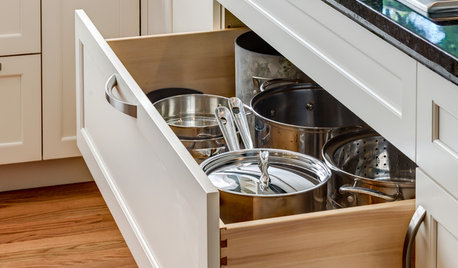
KITCHEN STORAGEHow to Get Your Kitchen Storage Under Control
An expert offers pointers on where to start organizing the kitchen and how to keep it neat
Full Story
LIVING ROOMS15 Decorating Moves to Take Your Living Room to the Next Level
These tricks with furniture, lighting, color and accessories go a long way toward making a space fashionable and comfortable
Full Story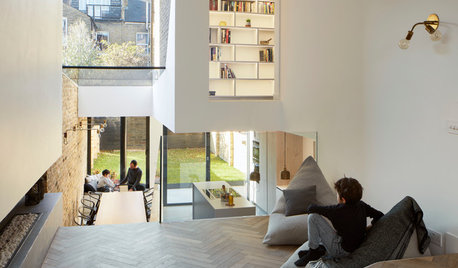
HOMES AROUND THE WORLDHouzz Tour: A Garden Connection That Works on Multiple Levels
Architects open up a Victorian in London to create a bright, spacious and fun home for their family
Full Story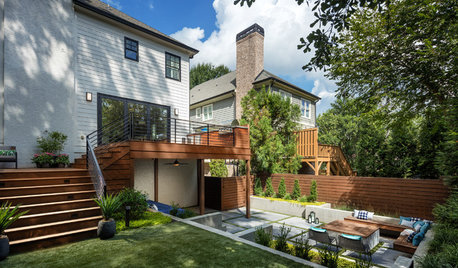
LANDSCAPE DESIGNSee 3 Sloped Lots Transformed Into Beautiful, Usable Landscapes
These designers turned muddy, overgrown hillsides into terraced outdoor living spaces
Full Story
ENTERTAININGModern Manners: Smooth Moves for Kids' Visits
For hosting kids or visiting with Junior in tow, we give you a plan to keep stress levels low and fun levels high
Full Story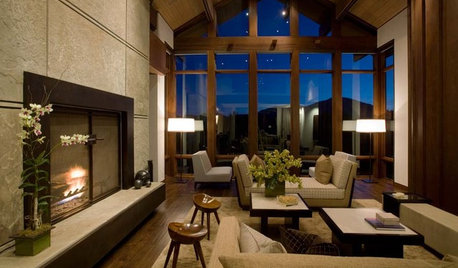
HOUZZ TOURSHouzz Tour: Contemporary, Natural Style in Idaho
Neutral colors and natural materials transform a large three-level home in Sun Valley into a comfy family retreat
Full Story


backyardfeast